Free Photography Bundle ($180 value): PS actions, LR presets, photo overlays, & print templates!
Get it here.
Newborn photography is special for both the photographer and the client because it can capture a phase in life that is very short, and one that every parent wants to remember. There are a lot of opportunities for photographers to get business from newborn sessions, but there is also a lot of planning and organization that is required for it to be successful. In this article we’ll look at 11 tips that can help you to get amazing results, and photos that your clients will love.
1. Put Safety First
When dealing with newborns safety should always come first. You will be positioning them for poses, so be sure that you don’t put them in uncomfortable or potentially dangerous poses, and always handle them with great care.
2. Keep the Temperature Comfortable for the Baby
In addition to safety, also think about the comfort of the newborn, specifically related to temperature. For many newborn shots the baby will be in a diaper, very small/light clothing or blankets, or no clothing at all. It’s best to keep the temperature warmer than usual to be sure that the baby is not cold. A portable space heater is a great option because you can use it wherever you are (your home/studio, the client’s home, in any room) and keep it close to the baby.
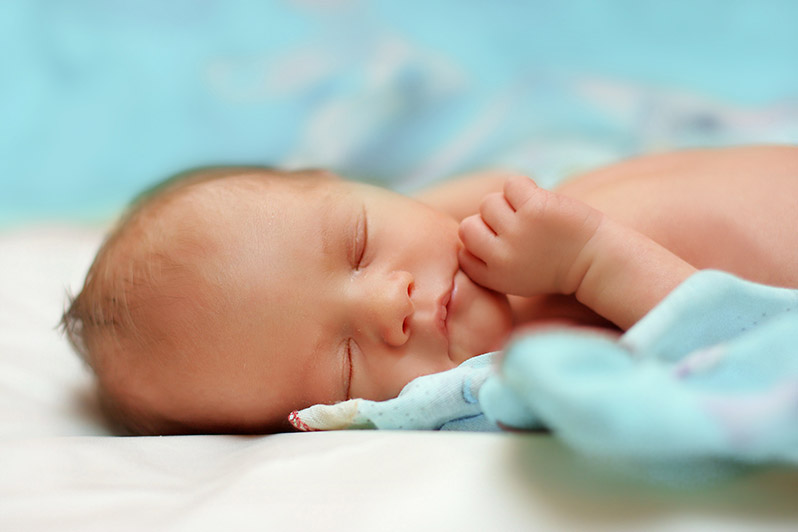
3. Studio Sessions are Best in the First 3 – 12 Days
During the first 10 or 12 days the newborn will be very sleep, which is usually what you want for newborn sessions. They are also easy to pose at this stage, and you can usually gently move them from one position to another without waking them. Whenever possible try to plan ahead with your clients so the session can be scheduled in this range. Of course, in most cases the client won’t know exactly when the baby will be born, so some flexibility is needed. If you wait until after the birth to schedule the session you will often be past this 10 or 12 day window by the time the session occurs.
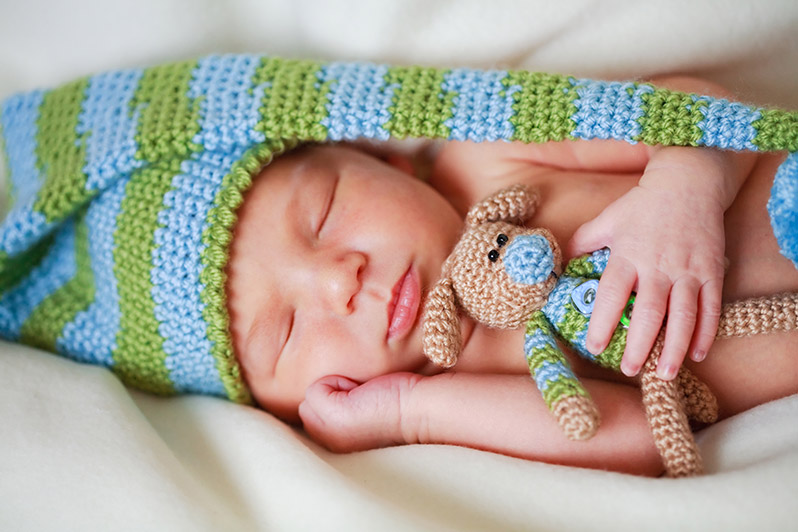
4. Clarify the Length of the Session with Clients
Newborn sessions can easily take longer than might be expected. This is in part due to the time needed for feedings, for gently moving between poses, and for cleaning up any accidents that may occur. It usually works best to have the mother feed the baby right before the session begins, which is usually a little easier when the session is held at the client’s home. When the session is held at your studio or your home you may want to ask the client to arrive early and feed the baby before beginning the session.
5. Be Prepared for Messes
When working with newborns, especially when they are not wearing diapers, accidents and messes will happen. Be prepared for it and allow time to clean up. If you’re using blankets, wraps, or other props you’ll also want to have some clean backups that will be ready to use right away.
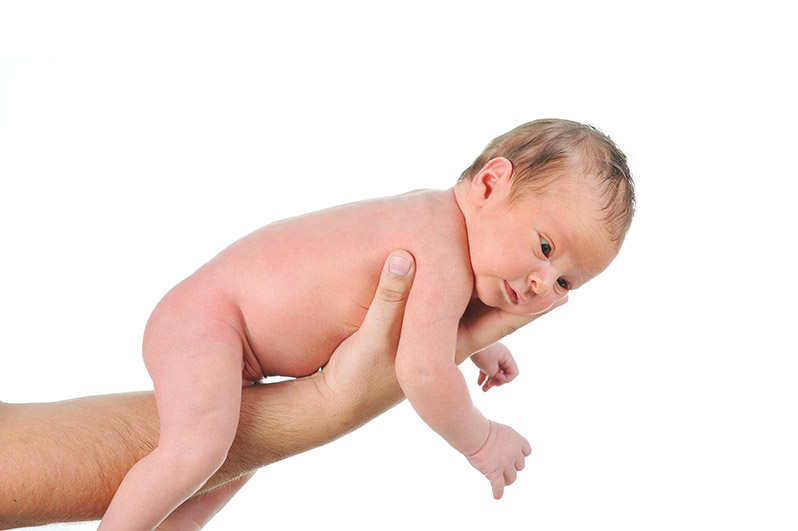
6. Understand What the Client Wants
There are a lot of different options and different directions that you could go with your newborn sessions, so it is important to know what the client wants. Do they want posed photos, a lifestyle session, family included, photos in specific outfits or with certain props? Prior to the session explain the options and ask the client what they prefer. Asking the client to fill out a questionnaire is a great way to get this information while saving some of your own time.
7. Have a Few Poses/Shots in Mind, Then Work with Flexibility
You never know what you are going to get from a newborn, and you don’t know how long they will be sleeping or cooperative. It’s best to know ahead of time which shots or poses are the most important, and focus on getting those done first, then move on to others. After you have the most critical shots you can see what is working well and go from there.
8. Have Props Ready
Most newborn sessions will use props of some sort, including blankets, hats, wraps, stuffed animals, baskets, and more. Prepare ahead of time and have any props ready so you can quickly move from one shot to the next. You don’t want to be wasting a newborn’s peaceful sleeping time while you are scrambling to find the right props.
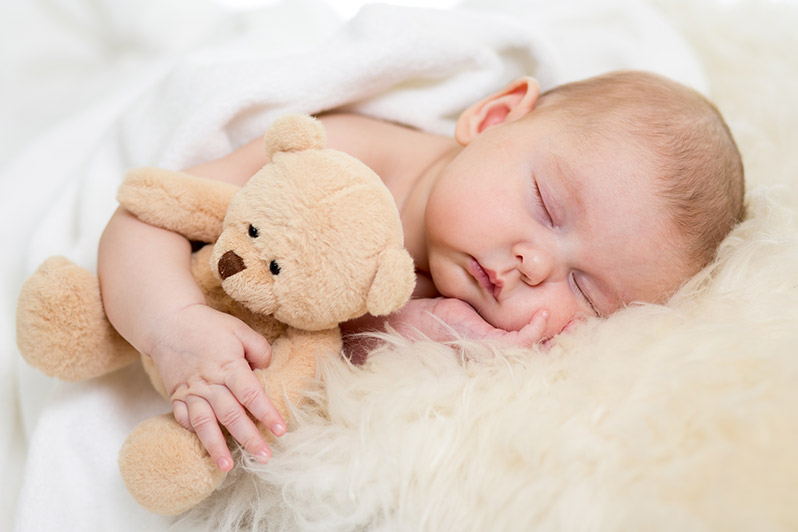
Another option is to use photo overlays as digital props. We have several sets of newborn photo overlays that you can use to decorate your photos.
9. Include Mom and Dad, and Siblings
Newborn sessions don’t have to focus exclusively on the baby. Involving the parents will often result in the best and most memorable shots. And if there are older siblings consider including them as well. When siblings are involved you may want to do those shots first, because depending on their age they may not have the attention span to be very cooperative an hour or two into the session.
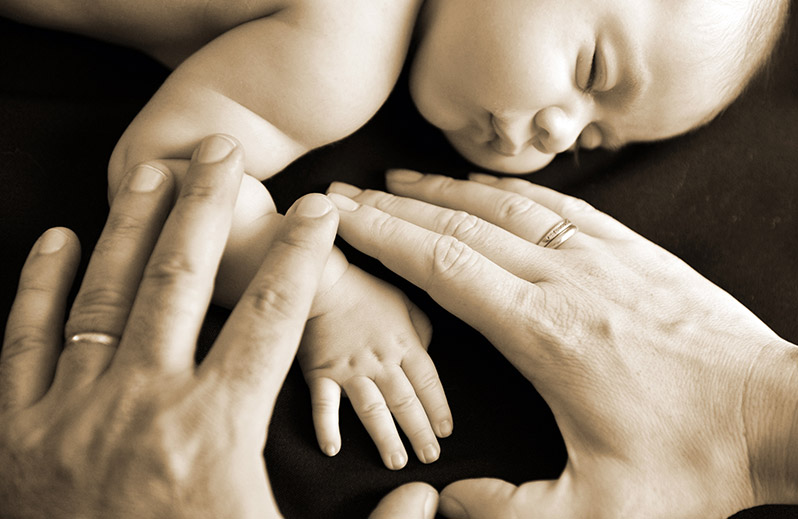
10. Capture the Details
Some of the most precious newborn photos feature details like tiny hands, fingers, feet, and toes. Don’t forget to emphasize and capture the details.
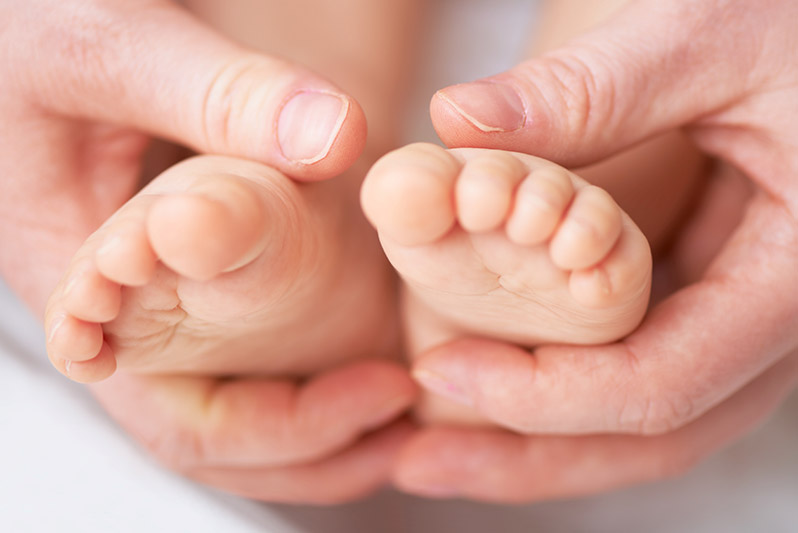
11. Learn Post Processing
Post processing is an important part of digital photography, and in order to get the best results you will need to be comfortable and capable in Photoshop or Lightroom. Some important issues that often come up when editing newborn photos include skin tones, skin softness or smoothness, working with backgrounds/backdrops, and occasionally compositing multiple photos (especially for a shot like the one shown below).
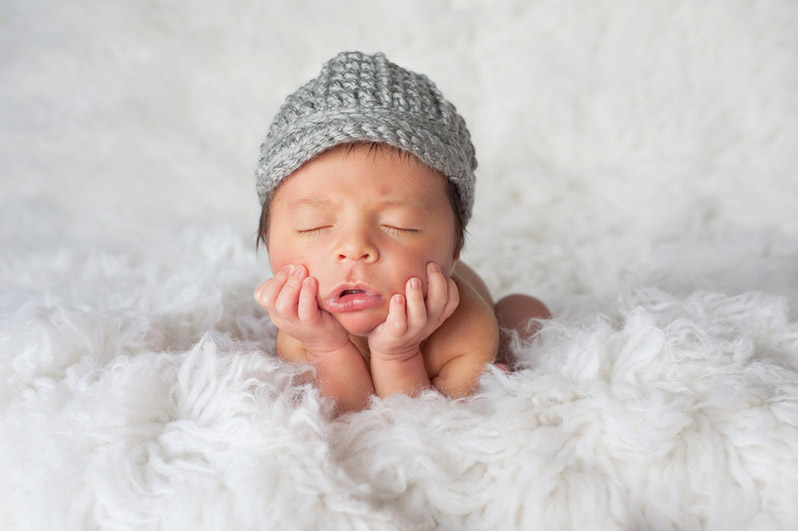
If you are not already familiar with Photoshop or Lightroom you will want to make that a priority. Phil Steele has some of the best training courses available. Lightroom Made Easy is a great way to get more comfortable with Lightroom, and if you prefer Photoshop be sure to check out Photoshop Basics for Photographers.

